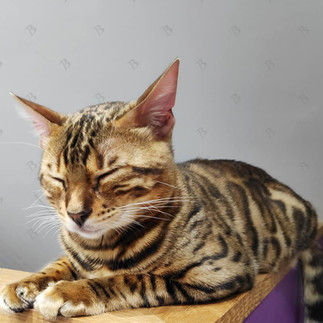Are Bengals Hypoallergenic?
- lilbengals
- Aug 8, 2023
- 2 min read
Bengals have a short and soft coat, some research indicates they produce less of the allergenic protein called Fel d 1, which is the main allergen responsible for causing allergic reactions in humans.
The reason for the potential lower allergenicity of Bengal cats is their unique coat. They have a distinctive pelt-like coat that is short, dense, and less prone to shedding. This can result in fewer allergens such as dander being released into the environment, potentially reducing the allergic reaction in some individuals.
Hibiki | Mochi & Huni | Sari
It is important to note that different individuals may have varying reactions to specific cat breeds, so it is recommended to spend time with a Bengal cat before bringing one into your home if you have allergies.
Bengal's shorter coat may potentially help reduce the spread of allergens through shedding.
Mochi and his silky fur
Is there a difference between Male and Females when it comes to allergens?
Male cats tend to produce more Fel d 1 allergen than females. This is because Fel d 1 is primarily produced in the skin's sebaceous glands, and male cats have higher levels of these glands than female cats. Additionally, intact male cats that have not been neutered may produce even higher levels of the allergen.

Lil Bengal kittens 7 weeks old
Here are some tips for managing cat allergies:
1. Limit exposure: Minimize the amount of time you spend in close contact with cats, especially if you have severe allergies. If you visit a house with cats, try to stay in areas where the cats are not allowed, or create a "pet-free" zone in your own home.
2. Keep cats out of specific areas: If you have allergies, designate certain areas of your home as cat-free zones, such as bedrooms or areas where you spend a lot of time. This can help reduce your exposure to allergens.
3. Regular cleaning: Vacuum carpets, rugs, and furniture frequently using a vacuum cleaner with a HEPA filter to trap allergens effectively. Consider using allergen-proof bedding on your mattress and pillows. Dust and clean surfaces regularly using damp cloths.
4. Air purifiers: Consider using air purifiers with HEPA filters to help remove allergens from the air in your home.
5. Wash hands and clothing: Wash your hands thoroughly after petting cats and avoid touching your face. Change your clothes after being in contact with cats to prevent allergens from spreading.
6. Regular grooming: If you own a cat, regular grooming can help reduce the amount of loose hair and dander in your home. Consider having someone without allergies handle the grooming if possible, or wear a mask and gloves while grooming the cat yourself.
7. Consult with an allergist: If your allergies are severe or significantly impact your quality of life, consider consulting with an allergist who can provide personalized advice and potentially recommend allergy medication or immunotherapy.
Summary
Bengal cats are often considered to cause fewer allergic reactions in some individuals compared to other cat breeds. However, it is important to note that this can vary from person to person, we recommend visiting us at Lil Bengals if you suffer from cat allergies. Book a visit here.
Hibiki | Lil Sari | Hibiki Sleeps




















Comments